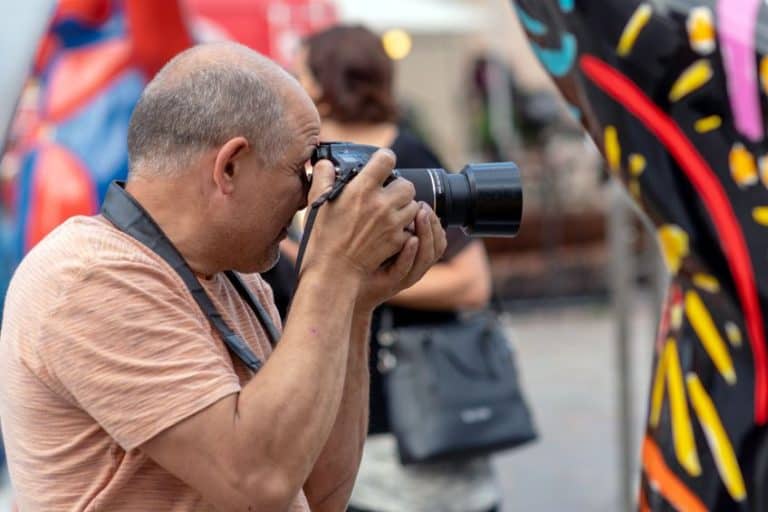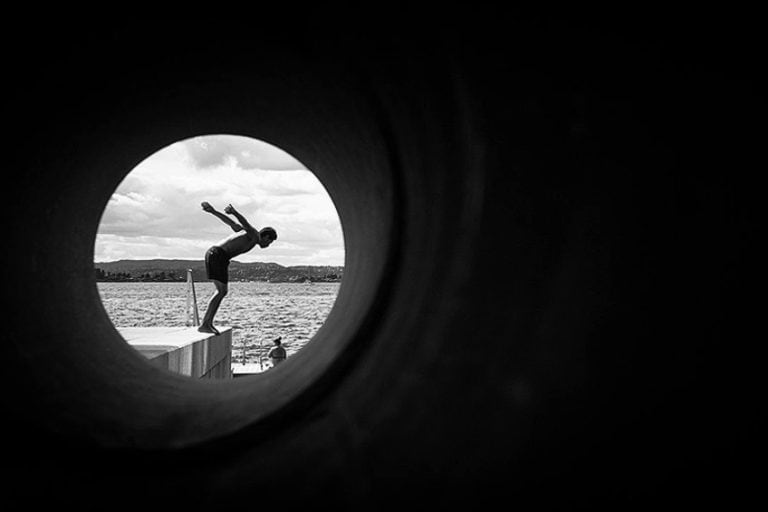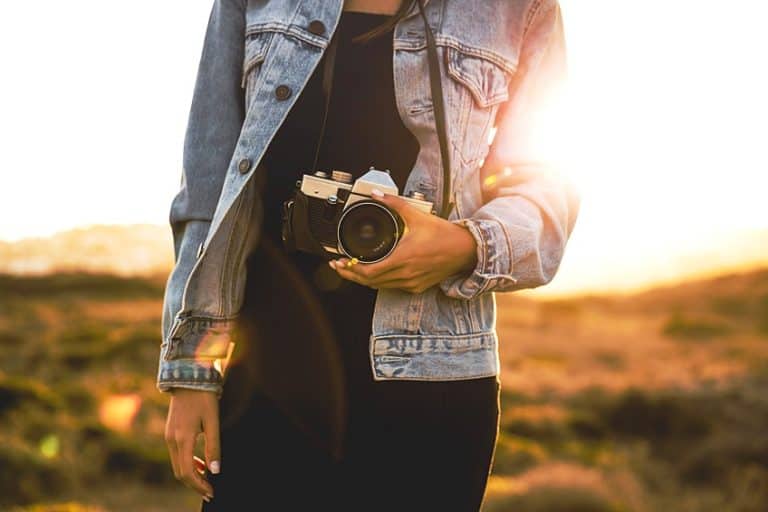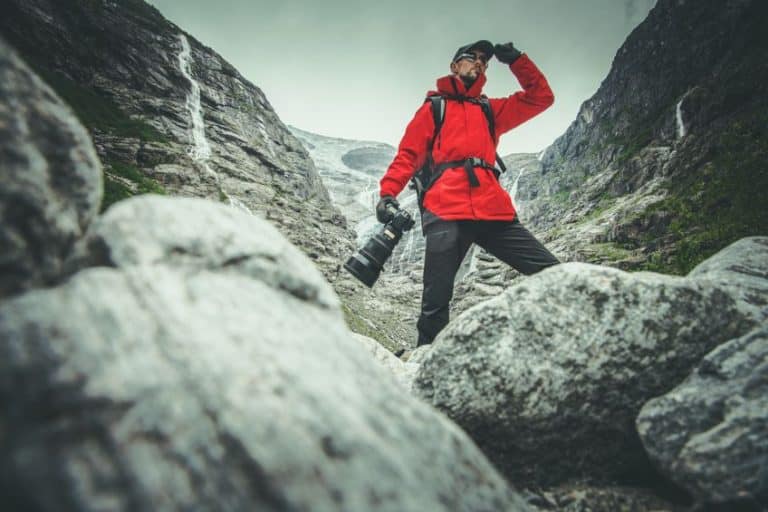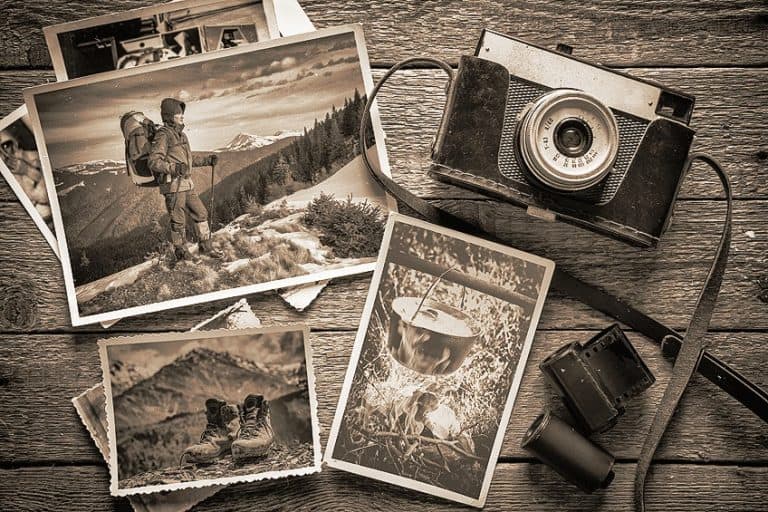Emphasis in Photography – What Is Emphasis in Photography?
What is emphasis in photography and are there examples of emphasis in photography that can help one gain a better understanding of the concept? How do we employ emphasis through size in photography? In this article, we shall look at the importance of this concept, discussing various techniques and what to avoid when using emphasis in photography.
Table of Contents
What Is Emphasis in Photography?
While several different photographers could all be looking at the same scene, where they decided to place their emphasis can have a huge effect on the story being told. If, for example, they were seated in a sports stadium with a game underway, one of the photographers might choose to focus on the exact position of the ball, whereas another could be focusing on the expression of fans sitting in the seats in the distance. The other might even try to capture heat waves radiating off the stadium’s roof using a long lens. Each photographer will be able to capture an absolutely unique perspective of the same scenario, and that is the importance of emphasis in photography.
It can also help an observer know what they are meant to focus on in a busy scene or can help to impart a specific message.
Understanding Emphasis in Photography
The use of emphasis draws the observer’s attention into your photograph and keeps them there long enough for you to communicate your message. It provides additional weight to your key subject and indicates to people where they should be focusing their attention. Unlike documentary photography, which provides a raw depiction of a situation, emphasis in photography deliberately picks a focal point to establish a narrative. Understanding photographic composition can assist you in emphasizing your chosen point of focus. These same concepts apply to many visual disciplines, including fine art and graphic design, and they are applicable whether you use an SLR or digital camera.

How Emphasis Can Be Used to Establish a Focal Point in Your Photographs
Composition is the arrangement of visual components in a photograph, including the primary subject matter. Mastering shutter speed or ISO can help one obtain great photo exposures, but compositional skills will help you draw the observer into your shot. Light, composition, and subject matter are things that good photographers constantly evaluate. You can get a nice photo with one or two of those characteristics, but you get a magnificent photo when you integrate all three of those together properly. These photographic compositional elements can help you convey the narrative you want to communicate whether your photographs are in landscape or portrait orientation.
Finally, many are relevant whether your photos are in black & white or color.
Techniques for Creating Emphasis in Photography
Let’s now look at a few different examples of emphasis in photography and how to use them. Place the principal or most intriguing element of your image in the crosshairs of the three-by-three grids that split your scene into equal sections using the principle known as the rule of thirds. The rule of thirds is very often mentioned, and it is now built into modern mobile phone cameras. You can begin to get more innovative with how you split things out and guide the viewer’s eye through employing these grids and extending and toying with them. While a symmetrical photograph is sometimes ideal, placing your subject to one side or in corners can also add interest. When using leading lines, horizontal, vertical, diagonal, and converging lines draw the viewer’s attention to your point of focus. You could, for example, utilize a beam of sunlight to draw attention to something you want to highlight.
 This photograph demonstrates and shows the principles of the rule of thirds; User:Moondigger, CC BY-SA 2.5, via Wikimedia Commons
This photograph demonstrates and shows the principles of the rule of thirds; User:Moondigger, CC BY-SA 2.5, via Wikimedia Commons
Use of Color, Contrast, and Lighting
The color contrast between your backdrop and your subject can help to draw attention to your focal point. To bring the viewer’s attention to the focal point, use complementary hues on the color wheel, such as an orange boat on a blue river or a female in a red outfit sitting on green grass. Giving your topic a splash of color is a tried-and-true strategy for drawing the audience’s eye to your subject right away, particularly if you convert a color shot to black and white but keep the subject in color. Cast shadows in other regions of your photograph or shine a light on your topic.
Dark parts in your photograph will make it more dramatic or intriguing. Shadows help in creating the perception of a third dimension and depth.
Depth of Field and Focus
Selective focus is a popular technique in which one section of a picture is selectively focused while the backdrop or other elements of the image are blurred. This pulls the viewer’s attention to the in-focus region and emphasizes it. Utilize a narrow depth of field to draw attention to your main topic. When it comes to product photography, depth of field is really quite important. And it is equally important for a lifestyle photo. The objects in the background should not compete with the main subject in the front. Depth of field can also assist in blurring a background so that it still has textures but does not divert your attention.

Creative Use of Emphasis in Photography
There are many creative ways to add emphasis in photography. These include playing with color contrast, depth of field, and experimenting with unusual techniques. Color is an important tool in photography that can be utilized to emphasize a number of things.
Using Color for Emphasis in Photography
A photographer might emphasize particular elements in a photograph by employing contrasting colors. In a largely blue photo, for instance, a little spot of brilliant yellow will grab the viewer’s attention. You can also add emphasis to a largely neutral image by using a strong, vibrant hue. A photograph of a black-and-white cityscape with a vibrant red taxi in the middle, for instance, would focus the viewer’s attention on the vehicle. A photographer can emphasize particular components in an image by manipulating the colors.
Desaturating all colors but one, for instance, can drastically draw attention to the saturated object.
Experimenting With Depth of Field
When you utilize a shallow depth of field, just a selected part of the image is in focus, while the rest remains blurred. This may be used to draw attention to a specific element in the photo. If you’re photographing a portrait, for instance, you may choose a narrow depth of field to keep the subject’s head in focus while blurring the surroundings. A shallow depth of field, on the other hand, will keep more of the image in focus. This is perfect for when you want to highlight specific features in a scene. While photographing a landscape, for instance, a shallow depth of field will maintain focus from the foreground to the background. The aperture is the hole in the lens that allows light to enter the camera. The depth of field may be controlled by altering the aperture. Experimenting with different apertures could also assist you in emphasizing certain aspects of the scene.

Playing With Unusual Techniques
Another factor you could utilize to create emphasis in photography is the angle of the shot. You can take a photo from several different perspectives, and each one will offer a completely distinct view of the subject. As you shift the perspective of a photograph, the focus shifts as well. You can choose from the Eye level, Worm’s eye view, and Bird’s eye view as interesting vantage positions from which to take the shot.
Cropping the image could also help you emphasize a certain area of the image. It can also be employed during the photo editing process.
When the subject is too far in the frame, for example, you might decide to crop the photograph to remove the uninteresting and excess space around it. This usually happens while you’re shooting wildlife. Conversely, negative space, or the area that surrounds the subject, can also be utilized to emphasize it. This means that one can also draw attention to the subject and allow it to stand out by leaving lots of space around it. By leaving a lot of negative space around the subject we make it smaller, and by filling the frame, we make the subject bigger, and this is how we create emphasis through size in photography.
Common Mistakes
When trying to establish a sense of emphasis in photography, there are several mistakes that beginners commonly make. While the aim is to add emphasis to specific subjects within your composition, it is also really easy to overemphasize elements too. While playing with contrast can serve as an efficient technique to establish focus, overuse can result in a severe and unnatural appearance. To prevent this from happening, use subtle contrasts, such as tonal contrast. Another mistake people make often is over-cluttered compositions.
Having an excessive amount of visual aspects in your photo could make it challenging for the observer to decide where the focal point is.

To avoid this mistake, declutter the design by removing superfluous features or employing negative space to give the subject more breathing room. The biggest mistake is failing to communicate the focal point of your photo to the observer. Photography is a way to communicate a message in which the observer plays an important role. Failure to address the viewer’s point of view and experiences could result in a lack of focus or misinterpretation. The best way to avoid this mistake is to put yourself in the shoes of the observer and consider how they would interpret the imagery. Establish a straightforward and appealing story that invites the observer into the scene and directs their focus to the image’s most crucial elements.
If you want your photos to be more engaging to your audience, then learning how to effectively establish emphasis in photography is crucial to your journey. Without it, people viewing your photos will find it hard to know what you are trying to convey. If you are looking for various techniques that you can use to improve your skills, put the examples of emphasis in photography that we have suggested into use, and see for yourself how the subjects in your images will start to pop out from the background.
Frequently Asked Questions
What Is Emphasis in Photography?
When you take a photo of a certain scene, it is essential to first establish a focal point in the image. There are various ways to bring the observer’s attention to the focal point, and this is the fundamental function of emphasis in photography. By incorporating the various techniques available to photographers, they can make their subjects pop out from the background, and create more intriguing images.
How Is Emphasis in Photography Established?
One common technique is to use the focus to make certain aspects clear and defined, while others become blurred. You can also play around with color contrasts to make the focal point pop out from the background. Also, try experimenting with perspective and framing to produce unique angles.
Jordan Anthony is a film photographer, curator, and arts writer based in Cape Town, South Africa. Anthony schooled in Durban and graduated from the University of the Witwatersrand, Johannesburg, with a Bachelor of Art in Fine Arts. During her studies, she explored additional electives in archaeology and psychology, while focusing on themes such as healing, identity, dreams, and intuitive creation in her Contemporary art practice. She has since worked and collaborated with various professionals in the local art industry, including the KZNSA Gallery in Durban (with Strauss & Co.), Turbine Art Fair (via overheard in the gallery), and the Wits Art Museum.
Anthony’s interests include subjects and themes related to philosophy, memory, and esotericism. Her personal photography archive traces her exploration of film through abstract manipulations of color, portraiture, candid photography, and urban landscapes. Her favorite art movements include Surrealism and Fluxus, as well as art produced by ancient civilizations. Anthony’s earliest encounters with art began in childhood with a book on Salvador Dalí and imagery from old recipe books, medical books, and religious literature. She also enjoys the allure of found objects, brown noise, and constellations.
Learn more about Jordan Anthony and the Art in Context Team.
Cite this Article
Jordan, Anthony, “Emphasis in Photography – What Is Emphasis in Photography?.” Art in Context. July 12, 2023. URL: https://artincontext.org/emphasis-in-photography/
Anthony, J. (2023, 12 July). Emphasis in Photography – What Is Emphasis in Photography?. Art in Context. https://artincontext.org/emphasis-in-photography/
Anthony, Jordan. “Emphasis in Photography – What Is Emphasis in Photography?.” Art in Context, July 12, 2023. https://artincontext.org/emphasis-in-photography/.




